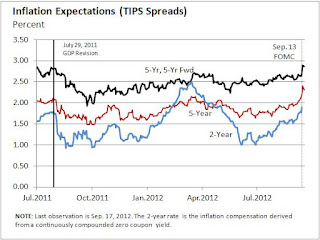How Canada Saved Its Bacon
September 2012 - Hello friend Grow Your Bitcoin, Get Free BTC, In the article you read this time with the title September 2012, we have prepared well for this article you read and take of information therein. hopefully fill posts we write this you can understand. Well, happy reading.
Title : How Canada Saved Its Bacon
link : How Canada Saved Its Bacon
Title : How Canada Saved Its Bacon
link : How Canada Saved Its Bacon
September 2012
Interesting to see that Canada's former finance minister (and prime minister) Paul Martin issuing a "stern warning" to U.S. policymakers; see here.
The similarity between the current U.S. slump and what happened to Canada in the 1990s is quite interesting, and I've written about it here: The Great Canadian Slump: Can it Happen in the U.S.?
I know that economists like Tiff Macklem and Pierre Fortin debated the issue some time in the mid 1990s, but I haven't really seen any work on the subject since then. If I recall correctly, I believe that Fortin was ascribing blame to the Bank of Canada, and possibly Paul Martin's "austerity" measures. Macklem (and coauthors) did not share the same view.
If you know of any more recent work that investigates the great Canadian slump, please pass it along.
The similarity between the current U.S. slump and what happened to Canada in the 1990s is quite interesting, and I've written about it here: The Great Canadian Slump: Can it Happen in the U.S.?
I know that economists like Tiff Macklem and Pierre Fortin debated the issue some time in the mid 1990s, but I haven't really seen any work on the subject since then. If I recall correctly, I believe that Fortin was ascribing blame to the Bank of Canada, and possibly Paul Martin's "austerity" measures. Macklem (and coauthors) did not share the same view.
If you know of any more recent work that investigates the great Canadian slump, please pass it along.
Interesting to see that Canada's former finance minister (and prime minister) Paul Martin issuing a "stern warning" to U.S. policymakers; see here.
The similarity between the current U.S. slump and what happened to Canada in the 1990s is quite interesting, and I've written about it here: The Great Canadian Slump: Can it Happen in the U.S.?
I know that economists like Tiff Macklem and Pierre Fortin debated the issue some time in the mid 1990s, but I haven't really seen any work on the subject since then. If I recall correctly, I believe that Fortin was ascribing blame to the Bank of Canada, and possibly Paul Martin's "austerity" measures. Macklem (and coauthors) did not share the same view.
If you know of any more recent work that investigates the great Canadian slump, please pass it along.
The similarity between the current U.S. slump and what happened to Canada in the 1990s is quite interesting, and I've written about it here: The Great Canadian Slump: Can it Happen in the U.S.?
I know that economists like Tiff Macklem and Pierre Fortin debated the issue some time in the mid 1990s, but I haven't really seen any work on the subject since then. If I recall correctly, I believe that Fortin was ascribing blame to the Bank of Canada, and possibly Paul Martin's "austerity" measures. Macklem (and coauthors) did not share the same view.
If you know of any more recent work that investigates the great Canadian slump, please pass it along.






















